Principality of Anhalt
County (Principality) of Anhalt Grafschaft (Fürstentum) Anhalt (German) | |||||||||
|---|---|---|---|---|---|---|---|---|---|
| 1218–1806 | |||||||||
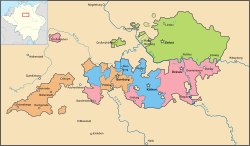 Map of Anhalt (Zerbst, Dessau, Köthen, Bernburg) in 1793 | |||||||||
| Status | Principality | ||||||||
| Capital | Dessau (when united) | ||||||||
| Religion | Roman Catholic (until 1520s) Lutheran (from 1520s) | ||||||||
| Government | Principality | ||||||||
| Prince of Anhalt | |||||||||
• 1218–1252 | Henry I | ||||||||
| Historical era | Middle Ages | ||||||||
• Partitioned from Saxony | 1212 | ||||||||
• Elevated to principality | 1218 | ||||||||
• Partitioned¹ | 1252–1570 | ||||||||
• Joined Council of Princes | 1582 | ||||||||
• Partitioned² | 1603–1863 | ||||||||
• Principalities³ raised to duchies | 1806 | ||||||||
| |||||||||
| Today part of | Germany | ||||||||
1: 13th-century partition into Anhalt-Aschersleben, Anhalt-Bernburg and Anhalt-Zerbst. 2: 17th-century partition into Anhalt-Bernburg, Anhalt-Dessau, Anhalt-Köthen, Anhalt-Plötzkau and Anhalt-Zerbst. 3: Anhalt-Bernburg, Anhalt-Dessau and Anhalt-Köthen. | |||||||||
The Principality of Anhalt (German: Fürstentum Anhalt) was a State of the Holy Roman Empire, located in Central Germany, in what is today part of the federal state of Saxony-Anhalt.
Under the rule of the House of Ascania, the Anhalt territory was split off the German stem duchy of Saxony in 1212 and granted to Count Henry I, who was raised to the rank of a Prince of the Holy Roman Empire in 1218. Ruled by Ascanian princes from the High Middle Ages to the Early modern period, Anhalt was divided several times amongst various lines of the dynasty until the dissolution of the Empire in 1806, when Napoleon elevated the remaining states of Anhalt-Bernburg, Anhalt-Dessau and Anhalt-Köthen to duchies.
Geography
[edit]The Anhalt territory stretched from the Harz mountain range in the west to the Elbe River and beyond to the Fläming Heath in the east. Upon the 1315 loss of Anhalt-Aschersleben, the lands around Ballenstedt formed a western exclave. The area of the later duchy was 906 sq mi (2,300 km2).
In the west, the land is undulating and in the extreme northwest, where it forms part of the Harz mountains, hilly, with the Ramberg (Harz) peak as the tallest point at 1,900 ft (579 m). From the Harz the country gently shelves down to the Saale; the land between this river and the Elbe is particularly fertile. East of the Elbe, the land is mostly a flat sandy plain, with extensive pine forests, interspersed with bog-land and rich pastures. The Elbe is the chief river, intersecting the eastern portion of the former duchy, from east to west, and at Rosslau is met by the Mulde. The navigable Saale takes a northerly direction through the central portion of the territory and receives, on the right, the Fuhne and, on the left, the Wipper and the Bode.
The climate is generally mild, less so in the higher Harz regions to the south-west.
History
[edit]From the 9th century onward, the western parts of the later Anhalt territory up to the Elbe and Saale rivers were included in the Schwabengau region of Eastphalia, the eastern part of the medieval Duchy of Saxony. In the 11th century, it came under the rule of Count Esico of Ballenstedt (died 1059 or 1060), mentioned in a 1036 deed issued by Emperor Conrad II at Tilleda. Possibly a descendant of the Saxon margrave Odo, he owned large allodial lands around Ballenstedt in the Schwabengau as well as in the adjacent Gau Serimunt in the former Saxon Eastern March.
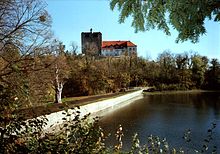
Count Esico was succeeded by his son Adalbert II of Ballenstedt, who also appeared as a count in the Saxon Nordthüringgau and further territories in the Eastern March. Adalbert joined the Saxon Rebellion against King Henry IV and was slain in a feud with Egeno II of Konradsburg in 1080. His son Count Otto the Rich appeared as a "Count of Ballenstedt" from 1106. When Emperor Henry V temporarily deprived Lothair of Supplinburg of the Saxon ducal title in 1112, Otto was enfeoffed with the Duchy of Saxony, which, however, he had to renounce shortly afterwards, as Lothair and Henry had reconciled. On the eve of the 1115 Battle of Welfesholz, Otto campaigned the lands of the Polabian Slavs, gaining large estates around Zerbst up to the Hevelli lands ruled by the Hevelli princes.
County of Anhalt
[edit]Until his death in 1123, Count Otto had Anhalt Castle built in the Harz mountains near Harzgerode and appears to have been among the first to assume the title of a "Count of Anhalt". He was the father of Albert the Bear, who temporarily was appointed Margrave of the Saxon Eastern March (or March of Lusatia) by the Saxon duke Lothair of Supplinburg and struggled for the ducal title himself. Albert could not prevail against the Welf duke Henry the Lion, nevertheless he conquered the eastern territories of the former Northern March, which had been lost in the 983 Great Slav Rising, where he established the Margraviate of Brandenburg in 1157. When he died in 1170, his younger son Count Bernhard inherited the Ascanian home territories around Anhalt Castle and after the deposition of Henry the Lion by Emperor Frederick Barbarossa finally became Duke of Saxony in 1180. However, he effectively only ruled over the Eastphalian territories, while the Westphalian and Engern parts of Saxony fell under the control of the Prince-Archbishops of Cologne.
The County of Anhalt finally arose upon the death of Duke Bernhard in 1212, when his sons divided their heritage. The younger Albert I became Duke of Saxony, while the elder Henry I went on to rule the Ascanian lands, now definitely separated from Saxony, as Count of Anhalt. In 1218, Henry I assumed the title of a prince and thereby was the real founder of the princely House of Anhalt.
Princes of Anhalt
[edit]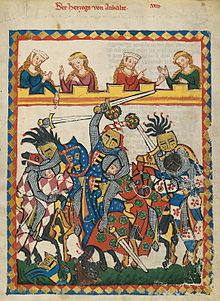
On Henry's death in 1252, his three sons partitioned the principality and founded, respectively, the lines of Aschersleben, Bernburg and Zerbst. The family ruling in Aschersleben became extinct in 1315, and this district was subsequently incorporated in the neighboring Bishopric of Halberstadt, thus dividing the territory of Anhalt-Bernburg in two separate pieces. The last prince of the original line of Anhalt-Bernburg died in 1468 and his lands were inherited by the princes of the sole remaining line, that of Anhalt-Zerbst. The territory belonging to this branch of the family had been divided in 1396, and after the acquisition of Bernburg Prince George I made a further partition of Zerbst (Zerbst and Dessau). Early in the 16th century, however, owing to the death or abdication of several princes, the family had become narrowed down to the two branches of Anhalt-Köthen and Anhalt-Dessau (issued both from Anhalt-Dessau in 1471).
Wolfgang of Anhalt, called the Confessor, who became prince of Anhalt-Köthen in 1508, was the second ruler in the world to introduce the Reformation to his country. He was a co-signer of the Augsburg Confession in 1530, and after the Battle of Mühlberg in 1547 was placed under Imperial ban and deprived of his lands by Emperor Charles V. After the peace of Passau in 1552 he bought back his principality, but as he was childless he surrendered it in 1562 to his kinsmen the princes of Anhalt-Dessau. Ernest I, Prince of Anhalt-Dessau (d. 1516) left three sons, John V, George III, and Joachim, who ruled their lands together for many years, and who favoured the Lutheran doctrine, which thus became dominant in Anhalt. About 1546 the three brothers divided their principality and founded the lines of Zerbst, Plötzkau and Dessau. This division, however, was only temporary, as the acquisition of Köthen, and a series of deaths among the ruling princes, enabled Joachim Ernest, a son of John V, to unite the whole of Anhalt under his rule in 1570.
The first united principality of Anhalt was short-lived, and in 1603 it was split up into the mini states of Anhalt-Dessau, Anhalt-Bernburg, Anhalt-Köthen, Anhalt-Zerbst and Anhalt-Plötzkau.
Joachim Ernest died in 1586, and his five sons ruled the land in common until 1603, when owing to the lack of primogeniture, Anhalt was again divided, and the lines of Dessau, Bernburg, Plötzkau, Zerbst and Köthen were re-founded. The principality was ravaged during the Thirty Years' War, and in the earlier part of this struggle Christian I of Anhalt-Bernburg took an important part. In 1635 an arrangement was made by the various princes of Anhalt, which gave a certain authority to the eldest member of the family, who was thus able to represent the principality as a whole. This proceeding was probably due to the necessity of maintaining an appearance of unity in view of the disturbed state of European politics.

In 1665, the branch of Anhalt-Köthen became extinct, and according to a family compact this district was inherited by Lebrecht, Prince of Anhalt-Plötzkau, who surrendered Plötzkau to Bernburg, and took the title of prince of Anhalt-Köthen. In the same year the princes of Anhalt decided that if any branch of the family became extinct its lands should be equally divided between the remaining branches. This arrangement was carried out after the death of Frederick Augustus, Prince of Anhalt-Zerbst in 1793, and Zerbst was divided between the three remaining princes. During these years the policy of the different princes was marked, perhaps intentionally, by considerable uniformity. Once or twice Calvinism was favoured by a prince, but in general the house was loyal to the doctrines of Martin Luther. The growth of Prussia provided Anhalt with a formidable neighbour, and the long-delayed establishment of primogeniture by all branches of the family prevented further divisions of the principality.
Dukes of Anhalt
[edit]
In 1806, Napoleon elevated the remaining states of Anhalt-Bernburg, Anhalt-Dessau and Anhalt-Köthen to duchies; in the meantime, Anhalt-Plötzkau and Anhalt-Zerbst had ceased to exist. With the Dissolution of the Holy Roman Empire the duchies became fully independent. The extinction of the Köthen line in 1853 and the Bernburg line in 1863, resulted in those states merging with Anhalt-Dessau to form the united Duchy of Anhalt.
Rulers of Anhalt
[edit]Partitions of Anhalt under Ascanian rule
[edit]| County of Anhalt (1030-1212) Raised to: Principality of Anhalt (1212-1252) | |||||
| Zerbst (1st creation) (1252-1396) |
Bernburg (1st creation) (1252-1468) |
Aschersleben (1252-1315) | |||
| Annexed to Bishopric of Halberstadt | |||||
| Köthen (1st creation) (1396-1562) |
Dessau (1st creation) (1396-1561) | ||||
| Zerbst (2nd creation) (1544-1562) |
Plotzkau (1st creation) (1544-1553) | ||||
| Principality of Anhalt (Anhalt-Zerbst line) (1562-1603) | |||||
| Köthen (2nd creation) (1603-1847) |
Plotzkau (2nd creation) (1603-1665) |
Dessau (2nd creation) (1603-1863) |
Zerbst (3rd creation) (1603-1793) |
Bernburg (2nd creation) (1603-1863) | |
| Duchy of Anhalt (from Anhalt-Dessau line) (1863-1918) | |||||
Table of rulers
[edit]| Ruler | Born | Reign | Death | Ruling part | Consort | Notes | |
|---|---|---|---|---|---|---|---|
| Albert I the Bear | 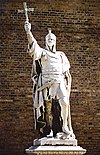 |
c.1100 | 1123-1170 | 18 November 1170 | Anhalt | Sophie of Winzenburg 1125 thirteen children |
Also Count of Ballenstedt, Duke of Saxony and Margrave of Brandenburg. |
| Bernard I |  |
c.1134 | 1170-1212 | 2 February 1212 | Anhalt | Brigitte of Denmark six children Sophia of Thuringia one child Judith of Poland c.1173 no children |
Also Count of Ballenstedt and Duke of Saxony |
| Henry I |  |
1170 | 1212-1252 | 1252 | Anhalt | Irmgard of Thuringia 1211 eleven children |
First independent ruler of Anhalt. In 1218 becomes Prince of Anhalt. After his death his sons divided the Principality. |
| Henry II the Fat |  |
1215 | 1252-1266 | 12 June 1266 | Anhalt-Aschersleben | Matilda of Brunswick-Lüneburg 1245 two children |
Children of Henry I, divided their rule. |
| Bernard I | 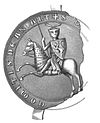 |
1218 | 1252-1287 | 1287 | Anhalt-Bernburg | Sophia of Denmark 3 February 1258 Hamburg six children | |
| Siegfried I | 1230 | 1252-1298 | 25 March 1298 | Anhalt-Zerbst | Catherine of Sweden 17 October 1259 ten children | ||
| Regency of Matilda of Brunswick-Lüneburg (1266-1270) | Children of Henry II, ruled jointly, first under their mother, who was elected Abbess of Gernrode in 1275. In 1283, Henry renounced his rights in Otto's favor. | ||||||
| Otto I |  |
c.1245 | 1266-1304 | 25 June 1304 | Anhalt-Aschersleben | Hedwig of Wrocław 1283 three children | |
| Henry III | c.1245 | 1266-1283 | 12 June 1266 | Anhalt-Aschersleben | Unmarried | ||
| Bernard II | 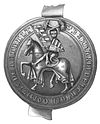 |
1260 | 1287-1323 | After 26 December 1323 | Anhalt-Bernburg | Helena of Rügen 27 December 1302 three children |
Ruled jointly. After the death of John, Bernard ruled alone. |
| John I | 1258/60 | 1287-1291 | 5 June 1291 | Anhalt-Bernburg | Unmarried | ||
| Albert I | c.1260 | 1298-1316 | 17 August 1316 | Anhalt-Zerbst | Liutgard of Holstein-Itzehoe after 1277 two children Agnes of Brandenburg-Stendal 1300 five children |
||
| Otto II | 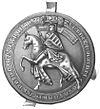 |
c.1260 | 1304-1315 | 24 July 1315 | Anhalt-Aschersleben | Elisabeth of Meissen 24 August 1309 two children |
After his death in 1315 without male heirs, the Principality was annexed by the Bishopric of Halberstadt. |
| Definitively annexed by the Bishopric of Halberstadt | |||||||
| Albert II | after 1277 | 1316-1362 | 17 July 1362 | Anhalt-Zerbst | Agnes of Rügen 2 September 1324 no children Beatrix of Saxe-Wittenberg c.1337 five children |
Albert III and Valdemar I ruled jointly, as sons of Albert II. In 1359 Albert III associated his eldest son, Albert IV, but he predeceased him. In 1362, after Albert III's death, is brother Valdemar continued the co-ruling with his nephew John II. Valdemar II, Valdemar I's son, joined John II after his father's death. | |
| Valdemar I | after 1277 | 1316-1368 | 7 January 1368 | Anhalt-Zerbst | Elisabeth of Saxe-Wittenberg 22 June 1344 six children Beatrice d'Este 1365 no children | ||
| Albert III | c.1337 | 1359 | 1 August 1359 | Anhalt-Zerbst | Unmarried | ||
| John II | after 1337 | 1362-1382 | 11 April 1382 | Anhalt-Zerbst | Elisabeth of Henneberg-Schleusingen 1366 four children | ||
| Valdemar II | c.1337 | 1368-1371 | before 24 August 1371 | Anhalt-Zerbst | Unmarried | ||
| Bernard III | 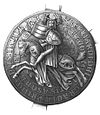 |
1300 | 1323-1348 | 20 August 1348 | Anhalt-Bernburg | Agnes of Saxe-Wittenberg 1328 five children Matilda of Anhalt-Zerbst 1339 no children Matilda of Brunswick-Wolfenbüttel 1343 two children |
|
| Bernard IV |  |
Before 1339 | 1348-1354 | 28 June 1354 | Anhalt-Bernburg | Unmarried | |
| Henry IV | Before 1339 | 1354-1374 | 7 July 1374 | Anhalt-Bernburg | Sophia of Stolberg before 1348 three children |
Bypassed by his older brother Bernard IV as ruler of Anhalt-Bernburg, he only assumed rule of the principality when Bernhard died in 1354. | |
| Otto III | Before 1348 | 1374-1404 | 27 February 1404 | Anhalt-Bernburg | Unknown two children Lutrudis before 1391 one child |
Bypassed his nephew Bernard. | |
| Sigismund I | After 1366 | 1382-1405 | 19 January 1405 | Anhalt-Dessau (in Zerbst until 1396) |
Judith of Querfurt 1386 eleven children |
Sons of John II. Ruled jointly. In 1396 divided the land. Sigismund received Anhalt-Dessau and Albert Anhalt-Köthen. | |
| Albert IV | After 1366 | 1382-1423 | 24 November 1423 | Anhalt-Köthen (in Zerbst until 1396) |
Elisabeth of Mansfeld I before 1398 six children Elisabeth of Querfurt before 4 January 1419 three children | ||
| Valdemar III | After 1366 | 1382-1391 | 1391 | Anhalt-Zerbst | Unmarried | ||
| Bernard V | Before 1374 | 1404-1420 | 24 June 1420 | Anhalt-Bernburg | Elisabeth of Hohnstein-Kelbra 8 September 1396 one child |
Succeeded in reaching the power jointly with his eldest cousin, Otto. As he left no male heirs, the land was inherited by his other cousin, Bernard. | |
| Otto IV | Before 1391 | 1404-1415 | 7 July 1374 | Anhalt-Bernburg | Unmarried | Ruled jointly with his cousin. Left no descendants. | |
| George I the Elder | 1390 | 1405-1474 | 21 September 1474 | Anhalt-Dessau | Matilda of Anhalt-Bernburg I after 1413 no children Euphemia of Oleśnica 1432 six children Sophia of Hohnstein after 1442 three children Anna of Lindow-Ruppin 7 September 1453 nine children |
Sons of Sigismund I, ruled jointly. In 1468 inherited Anhalt-Bernburg. | |
| Albert V | After 1390 | 1405-1469 | 1469 | Anhalt-Dessau | Sophie of Hadmersleben no children | ||
| Valdemar IV | c.1386 | 1405-1417 | After 22 July 1417 | Anhalt-Dessau | Unmarried | ||
| Sigismund II | After 1390 | 1405-1452 | After 22 May 1452 | Anhalt-Dessau | Matilda of Anhalt-Bernburg II no children | ||
| Bernard VI | Before 1391 | 1420-1468 | 2 February 1468 | Anhalt-Bernburg | Matilda of Querfurt-Burgscheidungen 21 October 1419 two children Hedwig of Żagań 11 March 1434 no children |
His children predeceased him, which left him no heirs at his death in 1468. Bernburg was inherited by Anhalt-Dessau line. | |
| Anhalt-Bernburg was annexed to Anhalt-Dessau | |||||||
| Adolph I | After 1398? | 1423-1473 | 28 August 1473 | Anhalt-Köthen | Cordula of Lindow-Ruppin 2 November 1442 Ruppin seven children |
Ruled jointly. Adolph ruled with his brother Valdemar V until 1436 and then with Valdemar's son John. In 1471, Adolph concluded a succession contract with George I, Prince of Anhalt-Dessau, which would put his youngest son in Köthen's throne, as Valdemar VI. | |
| Valdemar V | After 1398? | 1423-1436 | 28 August 1473 | Anhalt-Köthen | Sophie of Hadmersleben 1420 no children | ||
| John III | 1436-1463 | 1463 | Anhalt-Köthen | Unmarried | |||
| Valdemar VI (from Anhalt-Dessau line) |
1450 | 1473-1508 | 1 November 1508 | Anhalt-Köthen | Margaret of Schwarzburg 24 January 1485 Köthen four children |
After the contract established with Dessau, this line of princes dominated in Köthen. After the death of Adolph in 1473, George I of Dessau's sons, Valdemar VI and Albert VI, ascended to the principality. After Albert's death, Valdemar co-ruled with his nephews. In 1508, all his co-rulers abdicated to Valdemar VI's son, Wolfgang. | |
| Albert VI | After 1419? | 1473-1475 | 9 January 1475 | Anhalt-Köthen | Elisabeth of Mansfeld II 27 March 1454 Alsleben seven children | ||
| Philip | 31 May 1468 | 1475-1500 | 13 November 1500 | Anhalt-Köthen | Unmarried | ||
| Magnus | 1455 | 1475-1508 | 29 October 1524 | Anhalt-Köthen | Unmarried | ||
| Adolph II | 16 October 1458 | 24 March 1526 | Anhalt-Köthen | Unmarried | |||
| Ernest I | 1454 | 1474-1516 | 12 June 1516 | Anhalt-Dessau | Margaret of Münsterberg 20 January 1494 Cottbus four children |
Sons of George I, ruled jointly. | |
| George II the Strong | 1454 | 1474-1509 | 25 April 1509 | Anhalt-Dessau | Agnes of Pomerania-Barth 1478 no children | ||
| Sigismund III | 1456 | 1474-1487 | 27 November 1487 | Anhalt-Dessau | Unmarried | ||
| Rudolph I the Valiant | 1466 | 1474-1510 | 7 September 1510 | Anhalt-Dessau | Unmarried | ||
| Wolfgang the Confessor |  |
1 August 1492 | 1508-1562 | 23 March 1566 | Anhalt-Köthen | Unmarried | Sole ruler of Köthen. After his abdication without descendants, the Principality was incorporated in the recreated Anhalt-Zerbst. |
| Regency of Margaret of Münsterberg (1516-1524) | Children of Ernest I, ruled jointly, firstly under their mother. In 1544, the brothers divided the land. Joachim mainteined Dessau to himself; John took Zerbst and refounded Anhalt-Zerbst; George took Plotzkau. After George and Joachim's deaths without descendants, their lands were inherited by their nephews, sons of John III. | ||||||
| Joachim I |  |
7 August 1509 | 1516-1561 | 6 December 1561 | Anhalt-Dessau | Unmarried | |
| John IV |  |
4 September 1504 | 1516-1551 | 4 February 1551 | Anhalt-Dessau-Zerbst (in Dessau until 1544) |
Margaret of Brandenburg 15 February 1534 Dessau six children | |
| George III the God-Blessed | 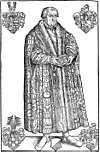 |
15 August 1507 | 1516-1553 | 17 October 1553 | Anhalt-Plotzkau (in Dessau until 1544) |
Unmarried | |
| Charles I | 17 November 1534 | 1551-1561 | 4 May 1561 | Anhalt-Zerbst | Anna of Pomerania 16 May 1557 Zerbst no children |
Sons of John IV. In 1553 inherited Plotzkau from their uncle George III. In 1561 inherited Dessau and Bernburg from their uncle Joachim. In the next year inherited Kothen. From 1570 Joachim Ernest was the sole owner of all Anhalt. | |
| Joachim Ernest | 
|
21 October 1536 | 1551-1562 | 6 December 1586 | Anhalt-Zerbst | Agnes of Barby-Mühlingen 3 March 1560 Barby six children Eleonore of Württemberg 9 January 1571 Stuttgart ten children | |
| 1562-1586 | Anhalt | ||||||
| Bernard VII | 17 March 1540 | 1551-1562 | 1 March 1570 | Anhalt-Zerbst | Clara of Brunswick-Lüneburg-Gifhorn 28 May 1565 Dessau one child | ||
| 1562-1570 | Anhalt | ||||||
| John George I | 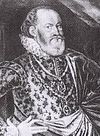
|
9 May 1567 | 1586-1603 | 24 May 1618 | Anhalt | Dorothea of Mansfeld-Arnstein 22 February 1588 Hedersleben five children Dorothea of Palatinate-Simmern 21 February 1595 Heidelberg eleven children |
Sons of Joachim Ernest, ruled jointly. In 1603 divided the land again: John George received Dessau; Christian received Bernburg; Augustus received Plötzkau; Rudolph received Zerbst; Louis received Köthen. Augustus served also as regent for his minor nephews in Anhalt-Kothen and Anhalt-Zerbst. |
| 1603-1618 | Anhalt-Dessau | ||||||
| Christian I | 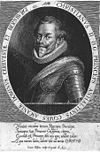
|
11 May 1568 | 1586-1603 | 17 April 1630 | Anhalt | Anna of Bentheim-Steinfurt-Tecklenburg-Limburg 2 July 1595 Lorbach sixteen children | |
| 1603-1630 | Anhalt-Bernburg | ||||||
| Rudolph II | 
|
28 October 1576 | 1586-1603 | 30 July 1621 | Anhalt | Dorothea Hedwig of Brunswick-Wolfenbüttel 29 December 1605 Wolfenbüttel four children | |
| 1603-1621 | Anhalt-Zerbst | ||||||
| Louis I | 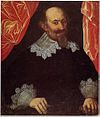
|
17 June 1579 | 1586-1603 | 7 January 1650 | Anhalt | Amöena Amalie of Bentheim-Steinfurt-Tecklenburg-Limburg 31 October 1606 Rheda two children Sophia of Lippe 12 September 1626 Detmold two children | |
| 1603-1650 | Anhalt-Köthen | ||||||
| Augustus | 14 July 1575 | 1586-1603 | 22 August 1653 | Anhalt | Sibylle of Solms-Laubach 25 January 1618 Ansbach eight children | ||
| 1603-1653 | Anhalt-Plötzkau | ||||||
| John Casimir |  |
17 December 1596 | 1618-1660 | 15 September 1660 | Anhalt-Dessau | Agnes of Hesse-Kassel 18 May 1623 Dessau six children Sophie Margaret of Anhalt-Bernburg 14 July 1651 Dessau no children |
|
| Regency of Augustus, Prince of Anhalt-Plötzkau (1621-1642) | |||||||
| John V |  |
24 March 1621 | 1621-1667 | 4 July 1667 | Anhalt-Zerbst | Sophie Augusta of Holstein-Gottorp 16 September 1649 Gottorp fourteen children | |
| Christian II |  |
11 August 1599 | 1630-1656 | 22 September 1656 | Anhalt-Bernburg | Eleonore Sophie of Schleswig-Holstein-Sonderburg-Plön 28 February 1625 Ahrensbök fifteen children |
|
| Frederick | 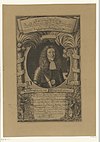 |
16 November 1613 | 1630-1670 | 30 June 1670 | Anhalt-Bernburg (at Harzgerode) |
Johanna Elisabeth of Nassau-Hadamar 10 August 1642 Bückeburg three children Anna Katharina of Lippe-Detmold (31 July 1612 – 15 October 1659) 26 May 1657 Harzgerode no children |
|
| Regency of Augustus, Prince of Anhalt-Plötzkau, Lebrecht, Prince of Anhalt-Köthen and Emmanuel, Prince of Anhalt-Köthen (1650-1653) | After his death without descendants, his previous regents took over the principality for themselves. | ||||||
| William Louis | 3 August 1638 | 1650-1665 | 13 April 1665 | Anhalt-Köthen | Elisabeth Charlotte of Anhalt-Harzgerode 25 August 1663 Köthen no children | ||
| Lebrecht I | 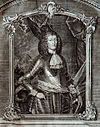
|
8 April 1622 | 1653-1665 | 7 November 1669 | Anhalt-Plötzkau | Sophie Ursula Eleonore of Stolberg-Wernigerode 18 January 1655 Plötzkau no children |
Cousins of William Louis, and princes of Anhalt-Plötzkau, they served as regents for their cousin alongside their uncle, Augustus. After William Louis' death in 1665, they took the principality of Köthen for themselves, giving away their inheritance in Plötzkau to Anhalt-Bernburg. |
| 1665-1669 | Anhalt-Köthen | ||||||
| Emmanuel | 
|
6 October 1631 | 1653-1665 | 8 November 1670 | Anhalt-Plötzkau | Anna Eleonore of Stolberg-Wernigerode 23 March 1670 Ilsenburg one child | |
| 1665-1670 | Anhalt-Köthen | ||||||
| Plotzkau definitively annexed to the Principality of Anhalt-Bernburg | |||||||
| Victor Amadeus |  |
6 October 1634 | 1656-1718 | 14 February 1718 | Anhalt-Bernburg | Elisabeth of Palatinate-Zweibrücken 16 October 1667 Meisenheim six children |
Annexed Anhalt-Plötzkau in 1665. |
| John George II |  |
17 November 1627 | 1660-1693 | 7 August 1693 | Anhalt-Dessau | Henriette Catherine of Nassau 9 September 1659 Groningen five children |
Prince of Anhalt-Dessau, he also served as regent for his cousin, Emmanuel Lebrecht of Anhalt-Kothen, together with the prince's mother, Anna Eleonore of Stolberg-Wernigerode. |
| Regency of Sophie Augusta of Holstein-Gottorp (1667-1674) | Children of John V, divided the rule. | ||||||
| Charles William |  |
16 October 1652 | 1667-1718 | 3 November 1718 | Anhalt-Zerbst | Sophia of Saxe-Weissenfels 18 June 1676 Halle three children | |
| John Louis I | 4 May 1656 | 1667-1704 | 1 November 1704 | Anhalt-Zerbst (at Dornburg) |
Christine Eleonore of Zeutsch (5 June 1666 – 17 May 1699) 23 July 1687 Halle seven children | ||
| Regencies of Anna Eleonore of Stolberg-Wernigerode (1670-1690) and John George II, Prince of Anhalt-Dessau (1690-1692) | |||||||
| Emmanuel Lebrecht | 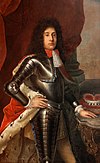 |
20 May 1671 | 1670-1704 | 30 May 1704 | Anhalt-Köthen | Gisela Agnes of Rath 30 September 1692 Nienburg (morganatic) ten children | |
| William Louis |  |
18 August 1643 | 1670-1709 | 14 October 1709 | Anhalt-Bernburg (at Harzgerode) |
Elisabeth Juliana of Solms-Laubach (6 March 1631 – 2 January 1693)25 July 1671 Laubach no children Sophie Auguste of Nassau-Dillenburg (28 April 1666 – 14 January 1733) 20 October 1695 Frederiksborg no children |
After his death, Harzgerode merged again in Bernburg. |
| Regency of Henriette Catherine of Nassau (1693-1698) | |||||||
| Leopold I |  |
3 July 1676 | 1693-1747 | 7 April 1747 | Anhalt-Dessau | Anna Louise Föhse 8 September 1698 Dessau (morganatic) ten children | |
| Regency of Gisela Agnes of Rath (1704-1715) | With no male heirs, he was succeeded by his brother. | ||||||
| Leopold |  |
29 November 1694 | 1704-1728 | 19 November 1728 | Anhalt-Köthen | Frederica Henriette of Anhalt-Bernburg 11 December 1721 Bernburg one child Charlotte Frederike of Nassau-Siegen 27 June 1725 Weimar two children | |
| Charles Frederick |  |
13 July 1668 | 1718-1721 | 22 April 1721 | Anhalt-Bernburg | Sophie Albertine of Solms-Sonnenwalde 25 June 1692 Bernburg six children Wilhelmine Charlotte Nüssler 1 May 1715 Bernburg |
Children of Victor Amadeus, divided their rule. |
| Lebrecht | 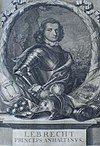 |
28 June 1669 | 1718-1727 | 17 May 1727 | Anhalt-Bernburg (in Zeitz-Hoym) |
Charlotte of Nassau-Schaumburg Schaumburg Castle 12 April 1692 five children Eberhardine of Weede (9 August 1685 – 13 February 1724) 27 June 1702 Grave six children Sophie Sibylla of Ingersleben (18 March 1684 – 31 March 1726) 14 September 1725 (morganatic) no children | |
| John Augustus | 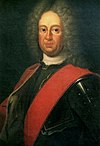 |
29 July 1677 | 1718-1742 | 7 November 1742 | Anhalt-Zerbst | Fredericka of Saxe-Gotha-Altenburg 25 May 1702 Zerbst no children |
Died without issue. Zerbst was inherited by his cousins from Dornburg. |
| Victor Frederick |  |
20 September 1700 | 1721-1765 | 18 May 1765 | Anhalt-Bernburg | Louise of Anhalt-Dessau 25 November 1724 Dessau one child Sophie Albertine Fredericka of Brandenburg-Schwedt 22 May 1733 Potsdam five children Konstanze Fredericka Schmidt 13 November 1750 Bernburg (morganatic) one child |
|
| Victor I Amadeus |  |
7 September 1693 | 1727-1772 | 15 April 1772 | Anhalt-Bernburg (in Zeitz-Hoym in 1727; in Schaumburg-Hoym from 1727) |
Charlotte Louise of Isenburg-Birstein (31 July 1680 – 2 January 1739) 22 November 1714 Birstein six children Hedwig Sophie Henckel of Donnersmarck 14 February 1740 Pölzig six children |
|
| Augustus Louis | 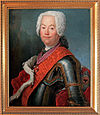 |
9 June 1697 | 1728-1755 | 6 August 1755 | Anhalt-Köthen | Agnes Wilhelmine von Wuthenau 23 January 1722 Dresden (morganatic) two children Christine Johanna Emilie of Promnitz-Pless 14 January 1726 Sorau five children Anna Fredericka of Promnitz-Pless 21 November 1732 Sorau two children |
|
| John Louis |  |
23 June 1688 | 1704-1746 1742-1746 |
5 November 1746 | Anhalt-Zerbst (in Dornburg) Anhalt-Zerbst |
Unmarried | First cousins of their predecessor, they were Princes of Dornburg, until its ending by joining it with the inherited Principality of Zerbst. Ruled jointly. after John Louis' death, Christian ruled alone. |
| Christian August |  |
29 November 1690 | 1704-1747 1742-1747 |
16 March 1747 | Anhalt-Zerbst (in Dornburg) Anhalt-Zerbst |
Joanna Elisabeth of Holstein-Gottorp 8 November 1727 Vechelde five children | |
| Christian Louis | 5 November 1691 | 1704-1710 | 20 October 1710 | Anhalt-Zerbst (in Dornburg) |
Unmarried | ||
| John Frederick | 14 July 1695 | 1704-1742 | 11 May 1742 | Anhalt-Zerbst (in Dornburg) |
Cajetana of Sperling (d.17 December 1742) no children | ||
| Leopold II Maximilian |  |
25 December 1700 | 1747-1751 | 16 December 1751 | Anhalt-Dessau | Gisela Agnes of Anhalt-Köthen 25 May 1737 Bernburg seven children |
|
| Regency of Joanna Elisabeth of Holstein-Gottorp (1747-1752) | |||||||
| Frederick August |  |
8 August 1734 | 1747-1793 | 3 March 1793 | Anhalt-Zerbst | Caroline Wilhelmina Sophia of Hesse-Kassel 17 November 1753 Zerbst no children Friederike Auguste Sophie of Anhalt-Bernburg 22 May 1764 Ballenstedt no children | |
| Definitively annexed by the Principality of Anhalt-Dessau | |||||||
| Regency of Dietrich of Anhalt-Dessau (1751-1758) | Prince of Anhalt-Dessau, also served as regent for his cousin, Louis Augustus Karl Frederick Emil of Anhalt-Kothen. After his death the regency in Anhalt-Kothen passed together with the principality of Anhalt-Dessau to his son. | ||||||
| Leopold III Frederick Franz |  |
10 August 1740 | 1751-1817 | 9 August 1817 | Anhalt-Dessau | Louise Henriette Wilhelmine of Brandenburg-Schwedt 25 July 1767 Charlottenburg two children | |
| Charles George Lebrecht |  |
15 August 1730 | 1755-1789 | 17 October 1789 | Anhalt-Köthen | Louise Charlotte of Schleswig-Holstein-Sonderburg-Glücksburg 26 July 1763 Glücksburg six children |
|
| Frederick Albert |  |
15 August 1735 | 1765-1796 | 9 April 1796 | Anhalt-Bernburg | Louise Albertine of Schleswig-Holstein-Sonderburg-Plön 25 November 1724 Augustenburg two children |
|
| Charles Louis | 16 May 1723 | 1772-1806 | 20 August 1806 | Anhalt-Bernburg (in Schaumburg-Hoym) |
Benjamine Gertrude Keiser (1 January 1729 – 6 January 1787) 25 March 1748 Stevensweert (morganatic) Amalia Eleonora of Solms-Braunfels (22 November 1734 – 19 April 1811) 12 December 1765 Braunfels five children |
||
| Augustus Christian Frederick | 18 November 1769 | 1789-1812 | 5 May 1812 | Anhalt-Köthen | Fredericka of Nassau-Usingen 9 February 1792 Frankfurt-am-Main no children |
In 1806 became Duke of Anhalt-Köthen. Left no descendants, and was succeeded by his nephew. | |
| Alexius Frederick Christian | 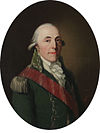 |
12 June 1767 | 1796-1834 | 24 March 1834 | Anhalt-Bernburg | Marie Friederike of Hesse-Kassel 29 November 1794 Kassel (annulled 1817) four children Dorothea Fredericka of Sonnenberg 11 January 1818 Ballenstedt (morganatic) no children Ernestine Charlotte of Sonnenberg 2 May 1819 Bernburg (morganatic) no children |
In 1803 became Duke of Anhalt-Bernburg. |
| Victor II Charles | 2 November 1767 | 1806-1812 | 22 April 1812 | Anhalt-Bernburg (in Schaumburg-Hoym) |
Amelia of Nassau-Weilburg 29 October 1793 Weilburg four children |
||
| Regencies of Leopold III, Duke of Anhalt-Dessau (1812-1817) and Leopold IV, Duke of Anhalt (1817-1818) | Died as a minor, never ruled by his own. | ||||||
| Louis Augustus Karl | 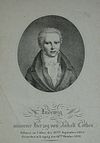 |
20 September 1802 | 1812-1818 | 18 December 1818 | Anhalt-Köthen | Louise Charlotte of Schleswig-Holstein-Sonderburg-Glücksburg 26 July 1763 Glücksburg six children | |
| Frederick | 29 November 1741 | 1812 | 24 December 1812 | Anhalt-Bernburg (in Schaumburg-Hoym) |
Unmarried | Son of Victor I. AFter his childless death, Hoym and Holzappel were inherited by his niece Hermine (daughter of Victor II), while Hoym merged in Bernburg again. | |
| Hermine |  |
2 December 1797 | 1812-1817 | 14 September 1817 | Anhalt-Bernburg (in Schaumburg and Holzappel) |
Archduke Joseph, Palatine of Hungary 30 August 1815 Schaumburg Castle two children |
Daughter of Victor II. After her death her lands probably merged again in Bernburg. |
| Frederick Ferdinand | 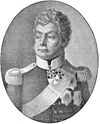 |
25 June 1769 | 1818-1830 | 23 August 1830 | Anhalt-Köthen | Maria Dorothea Henriette Louise of Schleswig-Holstein-Sonderburg-Beck 26 July 1763 Lindenau bei Heiligenbeil no children Julie of Brandenburg 20 May 1816 Berlin no children |
From the Anhalt-Pless line, cousin of his predecessor. Attempted, with no success, to reinstall Catholicism in his duchy. |
| Henry | 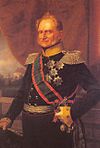 |
30 July 1778 | 1830-1847 | 23 November 1847 | Anhalt-Köthen | Auguste Fredericka Espérance Reuss of Köstritz 18 May 1819 Trebschen no children |
Left no descendants. His lands were inherited by Leopold of Anhalt-Dessau. |
| Definitively annexed to the Principality of Anhalt-Dessau | |||||||
| Alexander Charles |  |
2 March 1805 | 1834-1863 | 19 August 1863 | Anhalt-Bernburg | Friederike of Schleswig-Holstein-Sonderburg-Glücksburg 30 October 1834 Gottorp no children |
Left no male descendants. Bernburg reverted to Anhalt-Dessau. |
| Definitively annexed to the Principality of Anhalt-Dessau | |||||||
| Leopold IV Frederick | 
|
1 October 1794 | 1817-1863 | 22 May 1871 | Anhalt-Dessau | Frederica Wilhelmina of Prussia 18 April 1818 Berlin six children |
Prince of Anhalt-Dessau, ended the regency in Kothen after his cousin's death (1818). In 1863 he reunites Anhalt under his rule, and becomes its first duke. |
| 1863-1871 | Anhalt | ||||||
| Frederick I |  |
29 April 1831 | 1871-1904 | 24 January 1904 | Anhalt | Antoinette of Saxe-Altenburg 22 April 1854 Altenburg six children |
|
| Frederick II | 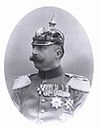 |
19 August 1856 | 1904-1918 | 21 April 1918 | Anhalt | Marie of Baden 2 July 1889 Karlsruhe no children |
Left no descendants. He was succeeded by his brother. |
| Edward |  |
18 April 1861 | 1918 | 13 September 1918 | Anhalt | Louise Charlotte of Saxe-Altenburg 6 February 1895 Altenburg (annulled 26 January 1918) six children |
Brother of his predecessor. Ruled 18 April to 13 September. |
| Joachim Ernest II |  |
11 January 1901 | 1918 | 18 February 1947 | Anhalt | Elisabeth Strickrodt 3 March 1927 Ballenstedt (morganatic, annulled 1929) no children Edda-Charlotte von Stephani-Marwitz 15 October 1929 Ballenstedt (morganatic) five children |
Ruled 13 September to 12 November. Monarchy abolished in that year. |

Notes
[edit]- ^ Siebmacher, Johann (1703). Erneuertes und vermehrtes Wappenbuch... Nürnberg: Adolph Johann Helmers. pp. Part I Table 8.
References
[edit]- This article incorporates text from a publication now in the public domain: Chisholm, Hugh, ed. (1911). "Anhalt". Encyclopædia Britannica (11th ed.). Cambridge University Press.



